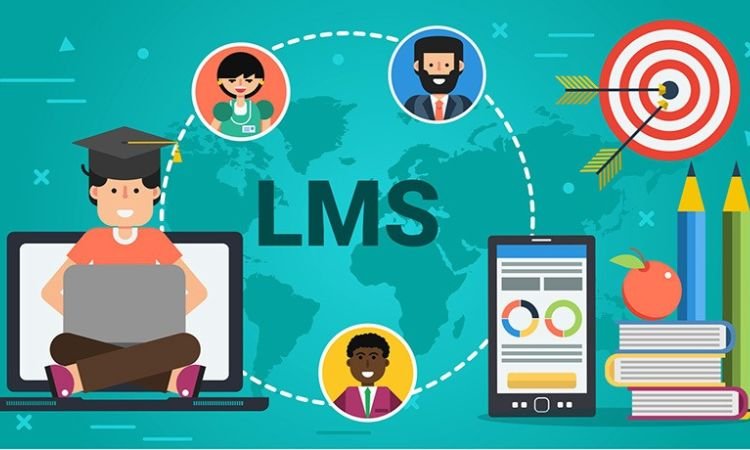The Growing Market for Learning Management Systems: Trends, Drivers, and Future Outlook (2024-2032)

The learning management systems (LMS) market size is being driven by increasing demand for digital learning as well as the introduction of gamification tools and user-specific systems. The market is expected to grow at a CAGR of 20% in the forecast period of 2024-2032, reaching USD 89.58 billion by 2032. As educational institutions, corporations, and government organizations seek more efficient, scalable, and engaging ways to deliver training and learning content, LMS platforms have emerged as an essential solution for modern learning environments. In this blog post, we will explore the key trends, market segments, drivers, challenges, and competitive landscape shaping the future of the LMS market.
Understanding Learning Management Systems (LMS)
A Learning Management System (LMS) is a software application designed to facilitate the management, delivery, and tracking of educational content. LMS platforms are used to administer online courses, training programs, and educational resources in a digital format. They support features such as course creation, learner tracking, assessments, content delivery, and interactive features to engage learners. These systems can be deployed in various sectors, including education, corporate training, healthcare, government, and more.
The rise of digital learning, especially accelerated by the global shift to online education and remote work, has significantly boosted the demand for LMS solutions. Additionally, the introduction of advanced technologies such as gamification, artificial intelligence, and personalized learning systems has made LMS platforms more adaptable and appealing across industries.
Market Segmentation: A Deeper Look
By Component
Solution
LMS solutions are the core offerings that provide the framework for creating, delivering, and managing online courses and content. These solutions include course creation tools, learner management features, collaboration tools, and reporting/analytics. The market for LMS solutions is expected to continue growing due to increasing adoption across educational institutions, large enterprises, and government agencies.
Services
LMS services include consulting, integration, customization, support, and training. As businesses and educational institutions seek more tailored LMS solutions that meet specific needs, the demand for services has surged. Whether it’s integrating an LMS with an existing Learning & Development (L&D) system or customizing a solution for a unique use case, these services ensure that organizations get the most value from their LMS platforms.
By Deployment Mode
Cloud-Based Deployment
Cloud-based LMS platforms are becoming increasingly popular due to their scalability, flexibility, and cost-effectiveness. The cloud deployment model allows organizations to avoid the upfront infrastructure costs associated with on-premise solutions. Furthermore, cloud-based LMS enables learners to access content from any device with an internet connection, making it ideal for remote learning environments and mobile learning. This deployment mode is particularly favored by SMBs (small and medium-sized businesses) and educational institutions, which benefit from lower total cost of ownership and easier upgrades.
On-Premises Deployment
On-premises deployment refers to hosting the LMS software on the organization’s own infrastructure, typically on internal servers. Although this model offers higher levels of data control and security, it can be more expensive to set up and maintain. Large enterprises and government organizations with strict data privacy and compliance requirements often prefer on-premises solutions for this reason.
By Delivery Mode
Distance Learning
Distance learning has grown exponentially in recent years, driven by the need for remote education and training solutions. LMS platforms enable distance learning by providing features like video conferencing, interactive content, assessments, and collaboration tools that replicate the experience of in-person education. Distance learning is a key growth driver in both the education and corporate sectors, where flexibility and accessibility are increasingly valued.
Other Delivery Modes
Other learning delivery modes include blended learning (a mix of in-person and online learning), instructor-led training, and social learning environments. Blended learning, in particular, has seen widespread adoption, as organizations seek to combine the benefits of traditional classroom learning with the convenience of digital education. LMS platforms play a critical role in enabling these mixed delivery modes by providing tools for content sharing, discussion forums, and assessments.
By Organization Size
Large Enterprises
Large enterprises have diverse training and learning needs, from employee onboarding to compliance training and leadership development. These organizations often adopt robust, enterprise-grade LMS platforms to handle the complexity of their training operations. Enterprise-level LMS platforms are designed to support thousands of users, offer advanced reporting capabilities, and integrate with other business systems such as Human Resource Management (HRM) or Customer Relationship Management (CRM) software.
Small and Medium-Sized Businesses (SMBs)
SMBs are increasingly turning to LMS platforms to deliver affordable, scalable training solutions to their employees. Cloud-based LMS platforms, in particular, offer SMBs an easy entry point into digital learning without the need for large investments in infrastructure. By leveraging LMS for employee development, SMBs can improve productivity, compliance, and employee retention while reducing training costs.
By End Use
Education Sector
The education sector represents a significant portion of the LMS market, with K-12 schools, universities, and online learning institutions embracing LMS platforms to deliver coursework and engage students. With the global shift to online learning, particularly in the wake of the COVID-19 pandemic, educational institutions are increasingly investing in LMS technology to facilitate remote learning, hybrid classrooms, and assessment management.
Corporate Sector
In the corporate world, LMS platforms are primarily used for employee training, skill development, and compliance management. With the increasing need for continuous learning, organizations are adopting LMS platforms to create personalized training programs that align with their workforce’s specific needs. Features like automated reporting, progress tracking, and certification are key selling points for corporate users of LMS platforms.
Government and Non-Profit
Government agencies and non-profit organizations are also significant users of LMS platforms, utilizing them for employee training, public education programs, and skill development initiatives. The flexibility of LMS solutions allows governments to scale their educational initiatives across a large population while maintaining compliance with regulations.
Healthcare and Other Industries
Industries like healthcare, manufacturing, and retail are embracing LMS technology to provide ongoing training for employees, ensuring they meet industry-specific certifications and skill requirements. Healthcare organizations, for instance, use LMS platforms to manage employee education in areas such as patient care, medical protocols, and regulatory compliance.
Regional Analysis
The adoption of LMS platforms varies significantly across regions, with different factors driving demand in each market.
North America
North America remains one of the largest markets for LMS, driven by the widespread use of digital learning in both educational institutions and enterprises. The United States, in particular, is home to several leading LMS providers and has seen widespread adoption in both the corporate and education sectors.
Europe
Europe is another key region for LMS adoption, with countries like the UK, Germany, and France investing heavily in digital education and corporate training solutions. The demand for LMS platforms in Europe is fueled by the region’s strong focus on skill development, vocational training, and e-learning initiatives.
Asia-Pacific
The Asia-Pacific region is expected to experience the fastest growth in the LMS market, particularly in countries like China, India, and Japan. The rapid digitalization of education, government initiatives to promote e-learning, and the rising demand for corporate training are major drivers of LMS adoption in this region.
Latin America and Middle East & Africa
In Latin America, the Middle East, and Africa, the LMS market is expanding as governments and businesses invest in digital education solutions. Growth in these regions is driven by rising internet penetration, a shift towards online education, and increasing adoption of LMS for corporate training.
Key Market Drivers
Several factors are driving the growth of the LMS market, including:
- Digital Transformation: As organizations embrace digital technologies, the need for digital learning platforms like LMS has grown. LMS solutions help businesses and educational institutions manage and track learning in a more streamlined, efficient manner.
- Gamification: The introduction of gamification tools in LMS platforms is making learning more engaging. Features like badges, leaderboards, and points encourage learners to stay motivated and engaged throughout the course.
- Personalized Learning: LMS platforms are increasingly incorporating AI and machine learning technologies to create personalized learning experiences. These systems tailor content to the needs of individual learners, enhancing engagement and outcomes.
- Cost-Efficiency: Cloud-based LMS platforms offer cost-effective solutions for both enterprises and educational institutions. The subscription-based pricing model reduces the need for hefty upfront investments and provides scalability.
Competitive Landscape
The global LMS market is highly competitive, with numerous players offering a wide range of products catering to different sectors. Leading LMS providers such as Moodle, Blackboard, Canvas, and SAP Litmos dominate the market, but emerging players are also innovating in areas like gamification, AI-powered learning, and mobile-first LMS solutions. These companies are constantly evolving their platforms to incorporate new technologies, improve user experience, and meet the diverse needs of their customers.




